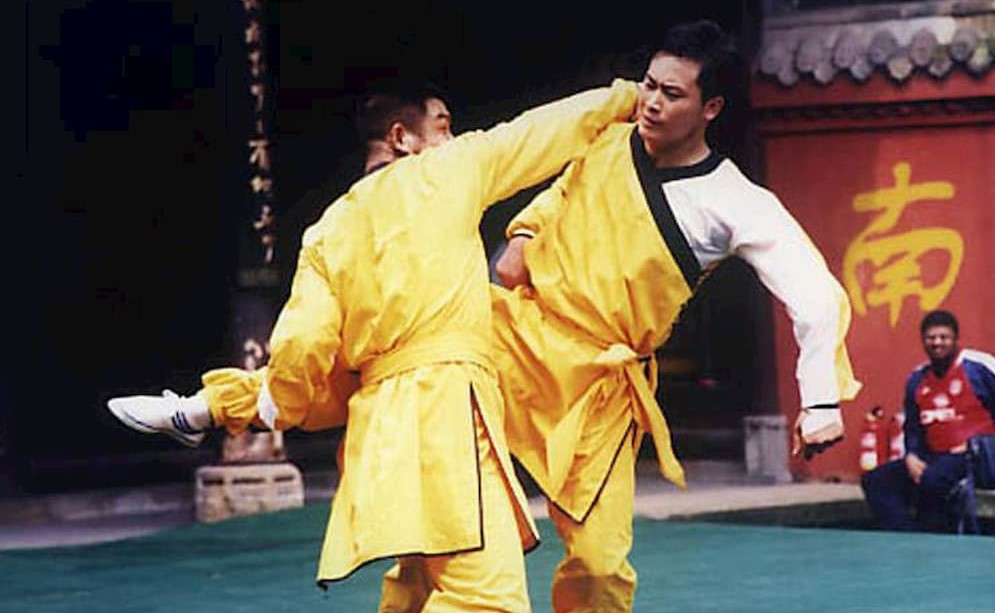
Chinese martial Arts
Splendid
Chi Culture
Topic
Chinese martial Arts
During the Warring states period (475–221 BCE), Chinese wushu was known as jiji (the art of attacking and defending). According to historical records, jiji, in the sense of an offensive and defensive warfare technique, from Han times (206 BCE–220 CE) on was called wuyi (martial skills). The term wushu (martial arts) was first seen in the poem “The School Sacrifice Gathering of the Crown Prince” by the Southern Dynasties Song (420–479) poet Yan Yanzhi (384–456) contained in Xiao Tong’s (501–531) Wen xuan. After that, the terms jiji, wuyi, and wushu were used interchangeably until 1928 when all were standardized and changed to guoshu (national arts). After 1949, all these terms were standardized again and called wushu. Since then, wushu was able to be transmitted, organized, and promoted, and was officially listed as a competitive sporting event. Now, it has even become an international sporting event.
The history of Chinese wushu is quite long. Simply put, wushu can be traced back to hunting and warfare of primitive societies. In the Three Dynasties, Xia, Shang, and Zhou (ca. 2100–221 BCE), wuwu (martial dance) practice developed. In the Spring and Autumn (770–476 BCE) and Warring States periods, with the development of metal weapons and incessant wars between states, a wide space was provided to develop martial skills. Bare-handed fighting, grappling, swordsmanship, crossbow shooting, and other martial skills also gradually took form. In the Tang dynasty (618–907) Wu Zetian (624–705, r. 690–705) established the military selectee system in 702, which created a pathway for a man to become a military official. During the Song (960–1279), Liao (916–1125), Xia (Western Xia, 1038–1227), and Jin (1115–1234) periods, frequent wars enhanced military martial arts training and various kinds of weapon production. In the Song many popular wuyi groups also appeared. The market fairgrounds were obliged to have wushu shows, which became one of the favorite cultural activities for the public. In Ming (1368–1644) and Qing (1644–1911), wushu started forming into schools. The popular wushu groups were everywhere and some even became involved in political activities, such as the Boxer group. During the Republican period (1912–1949), the military status of wushu gradually declined. After the People’s Republic of China was established, wushu officially became a sporting event.
There are many wushu schools overall, they are demarcated into internal and external schools, and south and north fists. Taiji, Xingyi, and Bagua were the representatives of the internal schools (Wudang is also considered an internal school). Shaolin was the general designation for the external schools, which was separated into two large sects, North and South. In the two main sects, Changquan is representative of the Northern, which included five big families—Tan, Cha, Hua, Hong, and Pao. In addition, there were other sects: Liuhe, Tongbei, Pigua, Erlang, Taizu, Duanda, Mizong, Tanglang, Baji, Fanzi, Ditang, Luohan, Chuojiao among others. The Southern sect was mainly in the two provinces of Fujian and Guangdong. Fujian had Dragon, Tiger, Leopard, Snake, Crane, and Wuzu fists (sects). Guangdong had Liu, Hong, Cai, Li, Mo, and Yongchun (Wing Chun) fists (sects). In addition, all wushu sects south of Yangtze River were included in the sphere of the southern schools (also called nanquan, or southern fists).
Wushu is an important component of Chinese national culture. It is not only for physical fitness, self-defense, and helping others, but also blends Chinese traditional arts, to become a complete entertainment performance activity. Besides the arts, wushu also had an influence on Chinese philosophy and literature. Ever since the Ming and Qing, wushu sects broadly spread, and many sects used ancient Chinese philosophy for theoretical guidance, which gave wushu a more profound cultural content. In addition, literary works based on knight errant (wuxia) topics are continuously emerging. Contemporary author Jin Yong’s (Louis Cha Leung-yung, 1924–) knight errant fictional works are popular masterpieces.
Chinese wushu is broad and profound in knowledge, and many famous masters have come from it. For example, Qi Jiguang (1528–1588) and Yu Dayou (1503–1579) were not only famous generals, but also martial arts masters. Also the likes of Huang Feihong (1847–1924) and Hou Yuanjia (1868–1910) were both famous in their time for their chivalrous nature and benevolent hearts. In the contemporary era, Bruce Lee (Li Xiaolong, 1940–1973) was a well-known superstar, who was also a founder of Jeet Kune Do (Jie Quan Dao). Those kung fu masters had their own expertise and also contributed to Chinese wushu.



